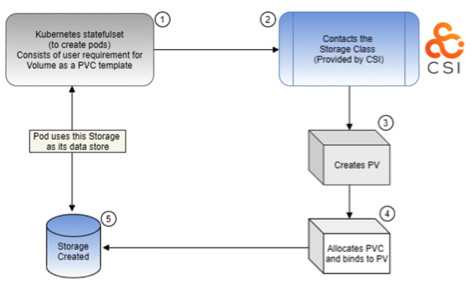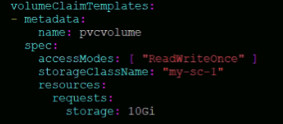SNIA SDC US: MSys Proposes Dynamic Storage Provisioning in Kubernetes
Solution that empowers admins to create storage volumes on-demand by leveraging dynamic provisioning
This is a Press Release edited by StorageNewsletter.com on October 8, 2020 at 2:08 pmMsys Technologies LLC‘ storage expert Divya Vijayakumar and Arun Kandasamy recently proposed a solution that empowers admins to create storage volumes on-demand by leveraging dynamic provisioning at SNIA SDC US 2020.
The technical talk focused around Container Storage Interface (CSI) volume methodology to create storage volume on demand at run time.
![]() Vijayakumar, during her talk, demonstrated dynamic provisioning in Kubernetes of Persistent Volume (PV) and PV Claim (PVC). She walked the audience through load balancing, which helps manage Container Storage Provider (CSP).
Vijayakumar, during her talk, demonstrated dynamic provisioning in Kubernetes of Persistent Volume (PV) and PV Claim (PVC). She walked the audience through load balancing, which helps manage Container Storage Provider (CSP).
Her proposed solution leverages Kubernetes CSI driver to enable CSP to perform data management operations on storage resources. It explains how CSI creates and deploys plug-ins to expose new storage systems with load balancing in Kubernetes without tweaking the core code. It also explains storage class and central storage provided by Nimble storage array, to create and manage CSI volume.
Vijayakumar enumerates: “My focus was in provisioning storage dynamically to a broad framework orchestrated by Kubernetes. Generally, K8s Pods are mortal, so when a pod dies, the data created inside it is lost forever. We propose a solution, called Dynamic Provisioning to overcome this data loss and to avoid manual creation of Persistent Volume (PV) and PV Claim (PVC).“
Further reflecting on Dynamic Provisioning, she added: “Previously, cluster management was a manual process by contacting storage providers to create new storage volumes. Subsequently, Persistent Volume objects were created to represent them in Kubernetes. Dynamic provisioning eliminated the need for cluster managers to pre-provision storage. Instead, it automatically provisions storage when requested by users. Persistent Volume types are implemented as plug-ins. Kubernetes currently supports many plug-ins like: AWSElasticBlockStore, AzureDisk, CSI, FlexVolume, NFS, Cinder, Glusterfs.“
SC-PV-PVC relationship
Vijayakumar stressed implementing statefulsets in Kubernetes for data-generating applications, which will contain a PVC request. This will contact the ‘Storage Class’, which in turn, will provision a PV and the PVC gets bound to this PV, in order to use this storage. This storage will, ultimately, be used by the pod/deployment which requested for the PVC for its data.
PVC in Kubernetes manifest
A Persistent Volume Claim is simply a volume requirement from the user There are different ways to create and deploy it in Kubernetes. One way is to do it via CLI command : kubectl create -f pvc.yaml Another way is to integrate it along with the Statefulset manifest file.
Future of Volume Provisioning
Speaking on future of Volume Provisioning, Vijayakumar said: “The future of Volume Provisioning in Kubernetes lies in leveraging the key components of Storage Architecture. The applications should be empowered to run independantly while dissociating them from a traditional, monolithic design. And still bring them together in a cluster to perform as ONE with some components even supporting externally, like Volume store is the new vision of all Orchestrators.“
Read also:
MSys Technologies: 35% Y/Y Revenue Growth in 2019
Adding 5 Silicon Valley enterprises and storage ISVs to clientele
January 23, 2020 | Press Release
Self-Healing Storage – Fail-Safe Storage and Heal-in-Time
By MSys Technologies
August 27, 2019 | Press Release
















 Subscribe to our free daily newsletter
Subscribe to our free daily newsletter

